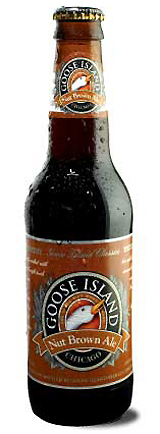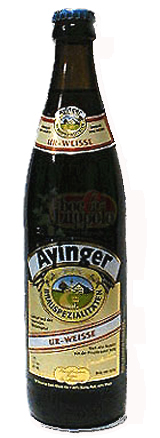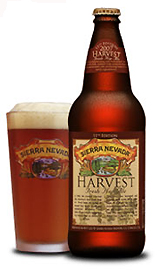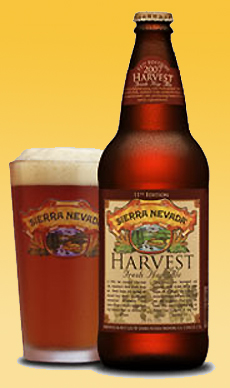Seasonal Beers
What You Drink In Winter Should Be Different From What You Quaff In Summer
Plus Three Terrific Beers For Late Fall & Winter
CAPSULE REPORT: If you’re drinking the same favorites year-round, you’re missing out on great seasonal brews. What tastes good in the cold of winter is different from what quenches thirst on a hot, humid day. And, like seasonal cooking, brewers use ingredients at peak seasonal freshness. Ryan Smith shares advice about what to drink as the seasons change. Even if you don’t live in an area where the seasons change a lot, you can still change your beers. In fact, our expert recommends that you sell the family heirlooms, if necessary, to get your hands on a bottle of Sierra Nevada Harvest Fresh Hop Ale, shown in the photo at left.
I drink a lot of beer over the course of a year. I drink beer when it’s hot outside, and I drink beer when it’s cold. I drink beer during driving rainstorms, and I drink beer during droughts (I consider it my duty to conserve water). I drink beer with my closest friends, and I drink beer with complete strangers—and if the Washington Redskins have just scored a touchdown, I’ve been known to even buy beer for complete strangers. I drink beer during baseball season, and I drink beer during football season. I even drink beer during golf season (although, as far as I can tell, golf season has no beginning and no discernable end, which allows me to happily drink beer in perpetuity). My point is, I rarely need an excuse to crack open a cold one. However, I used to drink the same few varieties of beer, regardless of whether it was June or January. These were usually insipid American macrobrews containing about as much flavor as those sticks of gum that they used to put in packs of baseball cards. Now, however, what I drink is largely dictated by when I drink it.
Seasonal brewing, like seasonal cooking, is rooted not only in the practice of procuring ingredients at the peak of their freshness, but also in the idea that our palates are shaped as much by the weather, the temperature and the time of year as anything else. In short, the flavors and foods we crave when it’s cold outside differ from those that we crave when it’s hot—and the beers brewed for winter, spring, summer and fall are as varied and distinct as the seasons themselves.
Summer Beers. During summer, when the heat and humidity hit us with all the subtlety of a habañero pepper, it’s generally too hot to do anything other than, well, sit around and drink beer. Hefeweizens (also spelled Hefe-Weizens), with their refreshingly light, slightly sweet flavors, are great thirst quenchers after a long, hot and blissfully unproductive day spent sitting by the pool.
Winter Beers. When winter arrives, barleywines and imperial stouts, with their strong flavors and high alcohol content (some as high as 12% by volume), provide the perfect antidote to the bone-chilling temperatures—and also pair well with many of the hearty foods that we eat during the coldest months.
Spring Beers. Spring has an identity crisis. Sometimes it’s cold. Sometimes it’s hot. Sometimes it’s unbearably cold in the morning and then, by the afternoon, it’s uncomfortably hot. Sometimes it snows. Often, it rains. In spring, I drink just about anything I can get my hands on just to cope with the confusion.
Fall Beers. Fall is different. Fall is laid-back. With its subtle changes in temperature and its crisp (not cold) weather, fall is Mother Nature’s way of taking pity on us. Unlike spring, with its temper tantrum-like thunder showers and garish blooms of pink and purple and yellow, fall rarely steals the spotlight. Fall is not Mick Jagger, preening and strutting across the stage. And fall is not Keith Richards, blaring his way through a guitar solo with a jaded smirk on his hard-worn face. Fall is Charlie Watts, defying the chaos around him by banging out each beat with calm, unflappable precision. Fall is dependable and steady, like a hi-hat, bass and snare working together in 4/4 time. But don’t mistake fall’s lack of flash for an absence of substance. Summer’s soaring temperatures force us indoors and lull us into Freon-induced stupors, but all it takes is that first sign of fall—the air growing cooler; the leaves turning from green to rust red and faded gold; John Madden’s mushmouthed baritone blasting over the airways—to snap us right out of our collective daze. And the beers brewed for fall—unpretentious ales and lagers with strong and often unique flavors—have the same effect on our palates. Here are a few beers guaranteed to keep your taste buds from fading into hibernation as the weather gets colder.
Goose Island Nut Brown Ale
Goose Island Brewery
Chicago, Illinois
In the parlance of U.K. pub culture, a “session” beer is a workhorse. You order it when you first sit down at the bar, and you keep ordering it until last call. Session beers tend to be lighter beers, so they won’t fill you up. And the alcohol content of a session beer is relatively low (no higher than 6%), so you can drink it throughout the evening without ultimately ending up on the floor or finding yourself engaged in conversation with inanimate objects.
Goose Island Nut Brown Ale is a quintessential session beer. In fact, if it were socially acceptable, I would drink this beer for breakfast (it probably pairs well with pancakes). It’s sweet, but not cloying. It’s rich in flavor but deceptively light in body. And while this richness makes it particularly well-suited for late-fall and early winter consumption, Goose Island Nut Brown Ale is actually brewed year-round, which means that my fridge stays stocked regardless of the season. Chicago’s Goose Island Brewery has been making craft beers since 1988. In 2006, Anheuser-Busch bought a 35% stake in the brewery, and many fans feared that the macrobrewing giant would stomp on Goose Island’s creative spirit. But Goose Island never abandoned its small-batch roots, and continues to make award-winning beers with the flavor-first brewing techniques that helped establish its reputation as one of the most innovative small breweries in the country.
Nut brown ales are traditionally made with roasted and caramelized malts, which give the brews their rich and sweet flavor as well as their trademark deep brown coloring—the name refers to the walnut-like color of the beer. And, thanks to the abundance of roasted malts used during brewing, many nut brown ales do have a slightly nutty flavor. Nut brown ales, like most brown ales in general, have only a trace of hoppy bitterness. Their tastes are derived almost entirely from those roasted malts, giving the beers a softer, buttery and more-rounded flavor. And when paired with the right foods, nut brown ales complement, rather than compete with, the other flavors in the dishes.
|

Chocolate-colored and creamy, Nut Brown Ale is so-called because of the walnut color and its “nutty” finish. |
Goose Island is sweeter than many other brown ales, with caramel and honey flavors and a hint of bittersweet dark chocolate. The presence of roasted malts also lends a slightly smoky flavor to the beer. The smoky flavor, combined with the muted flavor of hops, helps to balance the sweetness. The beer’s richness lets it stand toe-to-toe with some of the heartiest foods that we crave in fall and winter—dishes like butternut squash soup and braised short ribs. The caramel-like flavors also pair well with foods featuring caramelized vegetables (see, it’s not rocket science here), like French onion soup. And, true to its name, Goose Island Nut Brown Ale pairs well with various nuts—particularly roasted and smoked almonds. However, the brew’s sweet flavors pair best with those classic desserts of fall and winter: pumpkin pie, pecan pie and bread pudding. This is a great beer to drink after Thanksgiving or Christmas dinner.
Ayinger Ur-Weisse
Brauerei Aying
Aying, Bavaria (Germany)
The word “Dunkelweizen,” like many German words, sounds somewhat harsh—all hard consonants and dissonance. It doesn’t exactly roll off the tongue. Rather, it bounces with all the grace of an ice skater flubbing a triple Axel (say DOON-kul-VY-zun). However, the style of beer that it describes—Dunkelweizen means “dark wheat”—is deliciously smooth and drinkable. Ayinger (it means Aying’s, from the Aying Brewery) brews what I consider to be the world’s best Hefeweizen—a German wheat bear in which the yeast is not filtered out.* The beer’s smoothness is unmatched, its pleasantly-strong carbonation is unsurpassingly refreshing—particularly in the hot summer months—and the banana and clove flavors that typify Hefeweizens are in such deliciously high concentration that the beer tastes like it can’t possibly consist of only water, wheat, hops and yeast. Their Ur-Weisse Dunkelweizen is similar to their Hefeweizen, but with bolder and spicier flavors that are not only thirst-quenching, but deliciously complex, too.
*Also called Hefeweissbier, Weissbier, Hefeweisse and sometimes Weizenstarkbier, if left unfiltered.
Dunkelweizens—like all German Weizens, or wheat beers—are ales, meaning that they’re brewed with top-fermenting yeasts. And, like most breweries, Ayinger uses its own proprietary yeast cultures, which help shape the unique flavors of their brews. Wheat beers are traditionally unfiltered, and the sedimentary yeast particles give Weizens their hazy appearance.
|

Ayinger Ur-Weisse is an unfiltered, dark-wheat beer. |
Ayinger Ur-Weisse Dunkelweizen is one of my favorite beers to drink in the fall. It’s a spicy brew with aforementioned hints of banana and clove, along with the slight flavor of sour green apple and moderate hop crispness in the finish. It’s surprisingly light in body, yet it’s packed with dark malt flavors that pair beautifully with grilled meats and spicy sausage.
Sierra Nevada Harvest Fresh Hop Ale, 11th Edition, 2007
Sierra Nevada Brewing Company
Chico, California
I grew up in the suburbs, and I’ve spent my post-college years living either in or near major American cities. The closest I’ve ever come to farming was when my wife and I planted a garden in a tiny patch of grass outside of our Philadelphia apartment. We grew basil, and we picked a few leaves at a time whenever we felt like making pesto. That was our harvest: a few leaves of basil, picked every couple of weeks. By comparison, before brewing the 11th edition of their Harvest Ale, the good people at the Sierra Nevada Brewery harvested 8,000 pounds of hops in a single day. And when I sampled the finished product recently, it tasted like all four tons of those hops were right there in my glass.
And so I’m only going to say this once, Hopheads: Unless you’re holding a child or some sort of priceless and fragile family heirloom, you need to drop everything and go find a bottle of this beer. Do whatever it takes. If your local shop doesn’t have any more bottles, beg and plead with the owner to replenish the supply. If that doesn’t work, bribe your local distributor and write a letter to your Congressman. And if all else fails, head to the brewery in Chico, California, to sample it at the source. Just get your hands on a bottle. You will not be disappointed.
So why such gushing praise? Isn’t the beer market already oversaturated with intensely hoppy pale ales? Why is Sierra Nevada trying to cram one more hoppy treat onto America’s already-overflowing shelves? For starters, Sierra Nevada isn’t just any brewery. It’s one of the pioneers of the craft brew movement, and Sierra Nevada Pale Ale, its flagship beer, is one of the most popular craft brews in the country. Many beer lovers consider it to be the quintessential American example of the style (although, in the eye of this beer lover, an adventurous little brewery in Lewes, Delaware, makes the two best IPAs in the world). And Sierra Nevada Pale Ale is a good beer—pleasantly hoppy, smooth and drinkable. But Harvest Ale tastes like Sierra Nevada Pale Ale after a visit with Victor Conte.* Harvest Ale is both smoothly malty and aggressively hoppy. It explodes with the citrusy, piney flavors of cascade hops. I fully expect to find this beer on the Mitchell Report in a few months.
|

Find this beer immediately. |
*Victor Conte is president of BALCO, manufacturer of steroids taken by athletes Marion Jones, Barry Bonds, Tim Montgomery, and others. Former Senator and Disney chairman George J. Mitchell headed an investigation into steroid use by Major League Baseball players.
Harvest Ale is brewed using only fresh hops, which impart a stronger and more-complex bitterness than the dried variety used in most beers. Fresh hops are “wet” when they’re added to the brew, meaning that their resins and oils are preserved, adding an unmatched depth of flavor. Sierra Nevada was the first American brewery to experiment with adding fresh hops to beer.
Go. Really. Go and find this beer. For a number of years, it was only available on draft. The company started bottling the 10th edition last year—and when it’s gone, it’s gone. As Robert Frost wrote, describing fall, “So dawn goes down to day. Nothing gold can stay.”
Shopping Information
- Ayinger Ur-Weisse and Goose Island Nut Brown Ale are available to order online at BeerGeek.biz.
- Sierra Nevada Harvest Ale can be purchased online at LiquidSolutions.biz.
|







